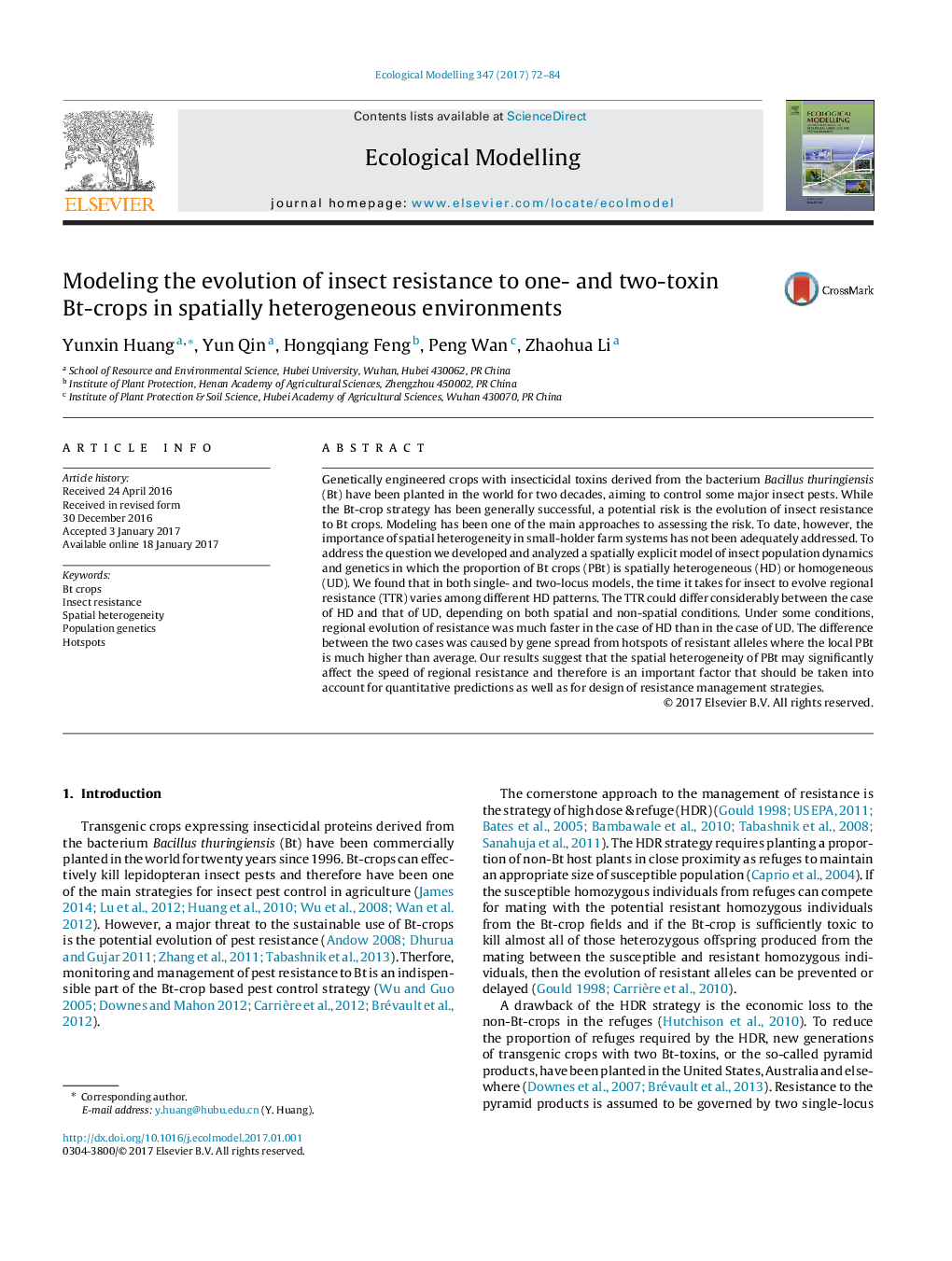| کد مقاله | کد نشریه | سال انتشار | مقاله انگلیسی | نسخه تمام متن |
|---|---|---|---|---|
| 5742334 | 1617400 | 2017 | 13 صفحه PDF | دانلود رایگان |

- Large-scale spatial heterogeneity in proportion of Bt crops (PBt) is explicitly modeled.
- Spatial heterogeneity in PBt conditionally speeds up regional evolution of insect resistance to Bt crops.
- Clusters of high PBt may result in hotspots of insect resistance to Bt crops.
- The hotspot effect is stronger for relatively lower and higher rate of dispersal.
Genetically engineered crops with insecticidal toxins derived from the bacterium Bacillus thuringiensis (Bt) have been planted in the world for two decades, aiming to control some major insect pests. While the Bt-crop strategy has been generally successful, a potential risk is the evolution of insect resistance to Bt crops. Modeling has been one of the main approaches to assessing the risk. To date, however, the importance of spatial heterogeneity in small-holder farm systems has not been adequately addressed. To address the question we developed and analyzed a spatially explicit model of insect population dynamics and genetics in which the proportion of Bt crops (PBt) is spatially heterogeneous (HD) or homogeneous (UD). We found that in both single- and two-locus models, the time it takes for insect to evolve regional resistance (TTR) varies among different HD patterns. The TTR could differ considerably between the case of HD and that of UD, depending on both spatial and non-spatial conditions. Under some conditions, regional evolution of resistance was much faster in the case of HD than in the case of UD. The difference between the two cases was caused by gene spread from hotspots of resistant alleles where the local PBt is much higher than average. Our results suggest that the spatial heterogeneity of PBt may significantly affect the speed of regional resistance and therefore is an important factor that should be taken into account for quantitative predictions as well as for design of resistance management strategies.
Journal: Ecological Modelling - Volume 347, 10 March 2017, Pages 72-84